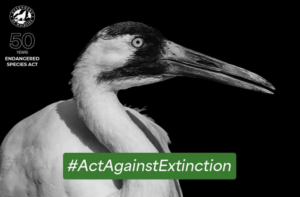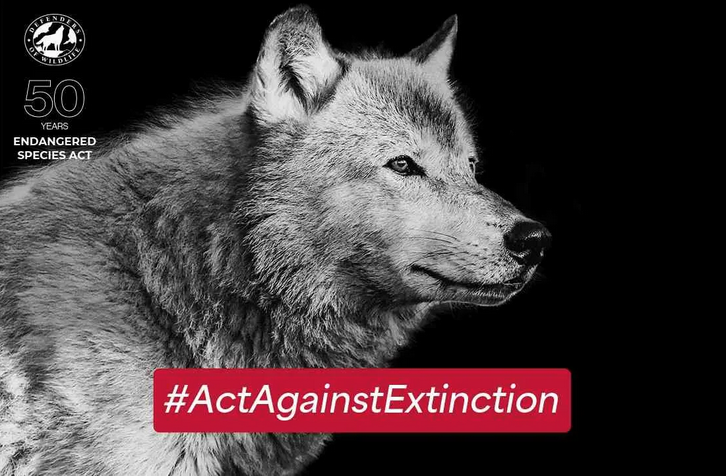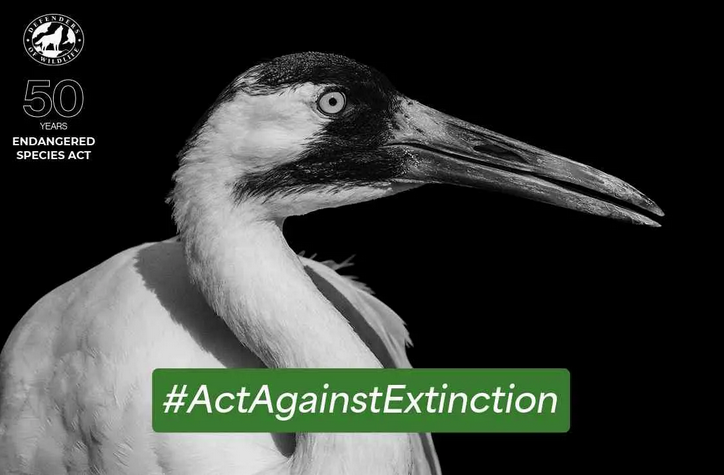For Immediate Release, May 12, 2023
Contacts
Israel Chavez, Doña Ana Village Association, donaanavillageassociation@gmail.com
Jeanne Dodds, Endangered Species Coalition, jdodds@endangered.org 360.624.8653
New Mexico Mural Celebrating Biodiversity Unveiled by Local Artists, Partners
Mural Series to Commemorate the 50th Anniversary of the Endangered Species Act
Doña Ana, N.M.— A collaboration of artists and partners will unveil the first in a series of murals to commemorate the 50th year of the Endangered Species Act on May 19th, at 3:00 pm in Doña Ana, New Mexico. The event will feature a community celebration with creative activities for youth and opportunities to watch the mural in progress. Migration: A Natural Act is a striking portrayal of the natural magnificence of southwestern New Mexico, with a particular focus on its imperiled fauna.
The mural, located at 135 Joe Gutierrez Street, Doña Ana (Las Cruces), New Mexico, highlights the Boreal Owl, Gila Monster, and two endangered fish species – the Chihuahua Chub and Roundtail Chub. Migration is a recurring theme of the artwork, with the river symbolizing the innate movement of humans and animals across the landscape. The river depicted in the mural is a potent force, breathing new life into the terrain and restoring its vitality. In the mural’s corners, one can observe the towering cottonwood trees, which are indigenous to the Doña Ana community and serve as a poignant reminder of the region’s rich natural heritage.
“Despite the obstacles faced by the endangered species depicted in the mural, the artwork’s overarching message is one of hope. It conveys that through diligent effort and unwavering commitment, it is conceivable to re-establish equilibrium in the ecosystem and revive the region’s vitality,” said artist Raquel Madrigal. “The mural is a beautiful tribute to the significance of preserving the natural world and its diverse fauna.”
The Endangered Species Act 50th Anniversary mural series will spotlight regional ecological and cultural diversity within the US by highlighting plants and animals that are protected by the Endangered Species Act. Species that are currently listed and in danger of extinction will be featured as well as some species who have recovered thanks to this landmark legislation. Murals will be installed throughout 2023 at regional locations across the US, including in Oregon, Arizona, Massachusetts, Florida and in other states.
About the Artist
Raquel Madrigal is an interdisciplinary artist with a degree in Fine Arts, who is widely known for her captivating murals, posters and zines that incorporate her unique poetry. Her murals, in particular, have garnered attention for their powerful narrative highlighting the struggles and triumphs of working-class families as well as the endangered species in Southern New Mexico.
About Doña Ana Village Association
The Doña Ana Village Association (DAVA) was founded in 2021 as a result of several community conversations which demonstrated a serious need for community organizing and representation. The Village of Doña Ana is the oldest federally designated Colonia in southern New Mexico, and its representation is limited to legislators and county commissioners.
About ESA at 50
In 2023, the 50th anniversary provides a unique, year-long opportunity to build support for the Endangered Species Act and imperiled species by celebrating conservation achievements, highlighting conservation needs, and generally reminding the public and decision-makers why plants, fish, and wildlife are beloved and vital to the heritage we share as Americans. Just as in 1973, an unprecedented coalition of agencies, organizations, and nonprofits are coming together to commemorate this conservation legacy.




